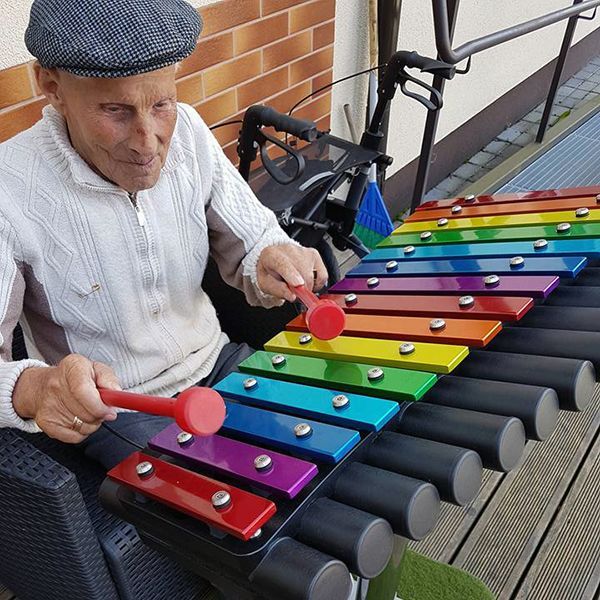Ensuring the Music-Making Continues after the Lesson Ends
Music touches all of our everyday lives and is an intrinsic part of contemporary culture. We know that most children love to engage in music-making activities and, unlike many adults, will experiment confidently and enthusiastically if offered a range of instruments and the freedom to be creative.
For children to reach the Early Learning Goal for 'Listening and Attention', supporting the 'Seven Areas of Learning' criteria, music resources should be as readily accessible as pencils and paper. Music is used in early phonics learning, especially in Phase 1 Letters and Sounds, as a method to encourage listening and sound discrimination as well as developing rhythm and rhyme. It is imperative that younger children are given opportunities, both teacher-led and through continuous provision, to explore elements of music with hands-on experience of musical instruments.
When musical instruments are introduced into continuous provision, there will be a noisy period of time while the children explore the new element available to them. This is a good time for adults in the setting to model good practices while encouraging the children to experiment. Once the initial rush dies down, children can then revisit the instruments without the guidance of an adult. Being able to repeat actions through choice allows them to consolidate learning and for skills to become embedded.
Creating the right environment for musical learning is an important starting point. Early learning centers with a separate space to explore music report that children are more focused and enjoy the freedom a separate music area brings.
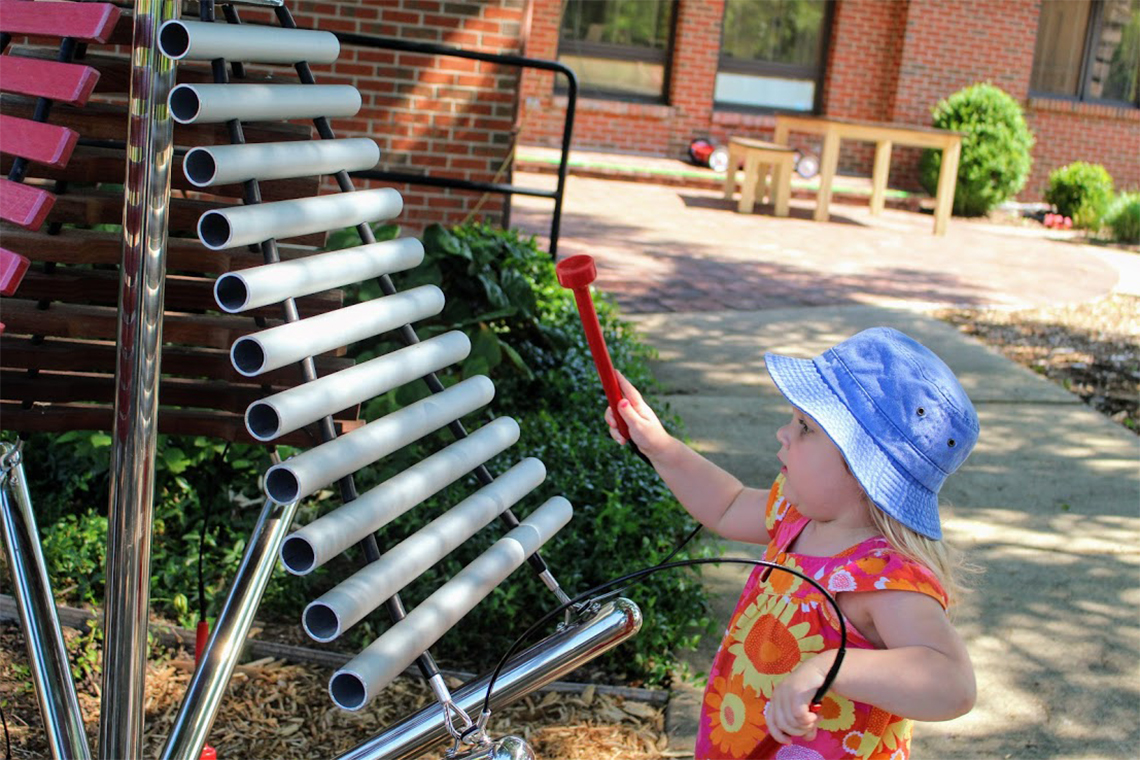
Outdoor Continuous Music Provision
The provision of a permanent outdoor musical and sound area can complement adult-led music sessions. It would allow children free access to musical play, enabling them to fully explore the musical instruments and continually revisit or extend their musical ideas. Enthusiastic investigations and performances can be quite loud, and outdoor musical areas can offer lots of opportunities for sound exploration, given that disturbance is usually less of an issue in the open air.
All continuous provision outdoors encourages children to explore the world around them. By venturing outside, a child’s innate desire to explore their world requires them to use their senses, test out theories, make mistakes, and persevere. It takes children up to 40 minutes to become totally engaged with an activity outdoors, and having a consistent outdoor musical environment will allow them plenty of time to plan their musical ideas, explore, make discoveries, and repeat a musical activity again and again. This helps them to become familiar with their surroundings and nurtures their confidence and feelings of security while consolidating their learning. This, in turn, encourages exploration and builds independence. This willingness to experiment links with the ‘Characteristics of Effective Learning’: Playing and Exploring, Active Learning, and Creating and Thinking Critically. Dedicating outdoor space to musical instruments means that noise levels within the classroom can be reduced, and children are presented with the additional advantages of learning outside the classroom.
Continuous provision resources for children to explore freely should be safe to explore, as well as challenging and engaging. Children will be creative with the percussive instruments that usually tend to be offered; however, they may be more musically expressive and creative if a more colorful range of sounds is offered. This does not necessarily mean the color of the instrument itself (although bright hues are especially exciting to youngsters) but rather the sound quality of the instrument. Quality is important not only for durability but also to strengthen the experience of playing. Good-quality instruments give a fuller, more satisfying experience when a child plays them, and the sounds they produce are richer, more resonant, and ultimately more motivating. Permanently installed outdoor musical instruments made of durable, modern materials that won’t sacrifice sound quality are hard-wearing and resilient to both weather and heavy-handed young musicians.
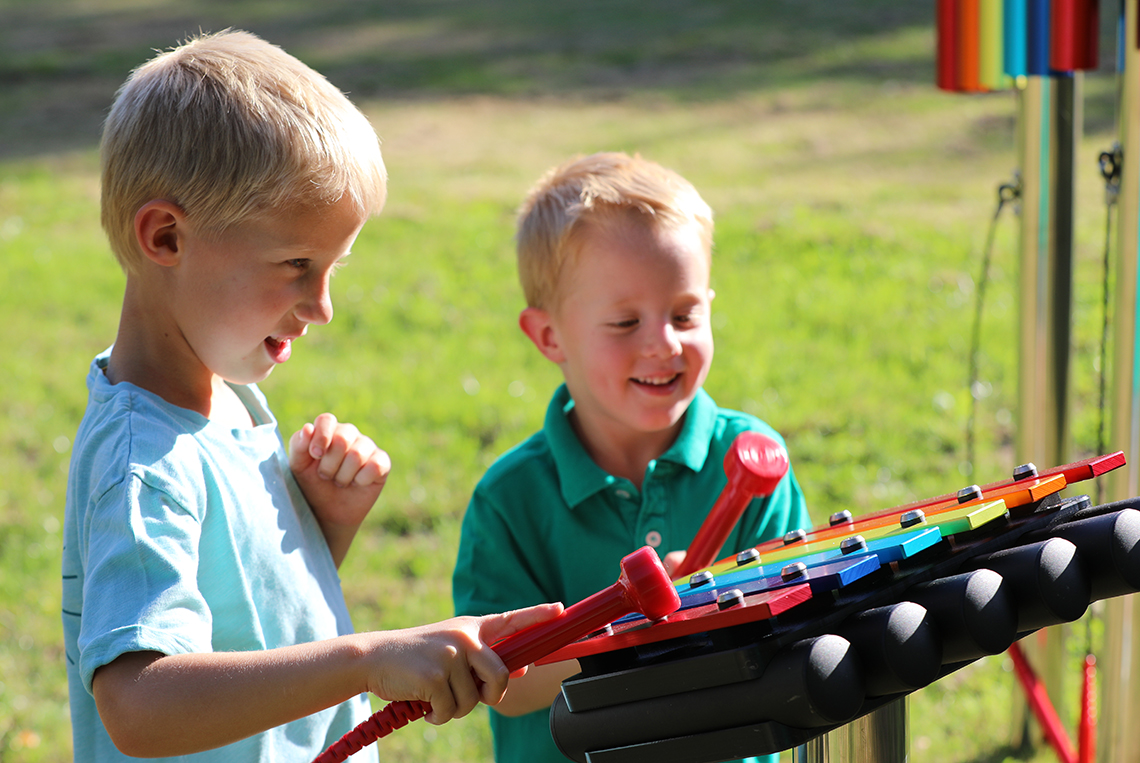
To Tune or Not to Tune?
The instruments usually offered in early childhood settings are percussion instruments, and the provision doesn’t often include tuned instruments. Tuned instruments are instruments that produce different pitches (high and low sounds), such as a xylophone or set of chimes, and further encourage musical creativity and confidence. The tuning of instruments may also help to make musical discovery, play, and exploration more pleasing to the ear! Instruments tuned to the five-note Pentatonic Scale, like the Rainbow Trio Ensemble, have the notes which cause discord removed, meaning that the notes can be played in any order without clashing. This not only ensures more tuneful experimentation but builds self-esteem and confidence in the player who is unable to make ‘mistakes’. Smaller tuned outdoor instruments have fewer notes - there are only six notes on the Rainbow Metallophone – which is less overwhelming to a child and means they have a higher chance of finding the note they are looking for, and therefore leads to more successes, feelings of accomplishment and more learning moments.
That said, the untuned percussion family is large and varied and can bring a variety of playing experiences to young children, e.g., striking, shaking, or hitting them with their hands. We used to think of percussion for children as bells, triangles, and tambourines, however, these days we can find a diverse range of child-sized, high-quality untuned percussive instruments including tubanos, conga, and bongo drums.
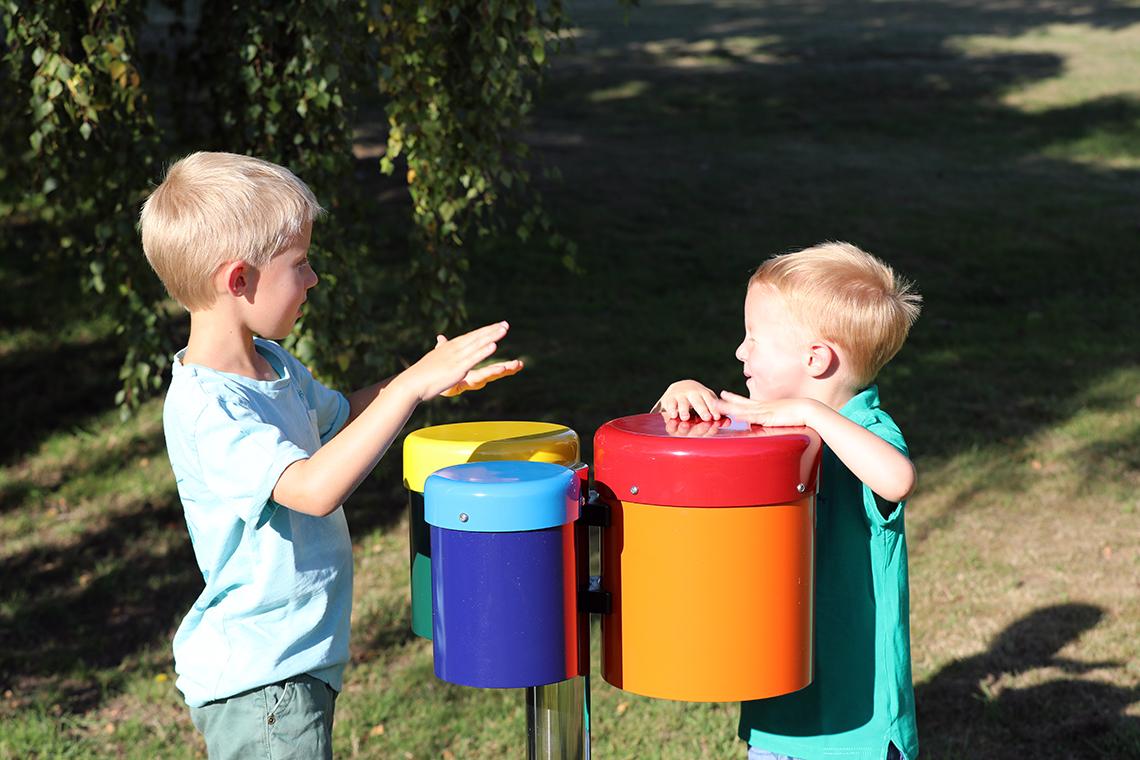
Capturing the Moment
Music is trickier as an art form to document compared to visual art as it is live, and once it has been created in that moment, it disappears - unless we manage to capture it. A child’s free exploration of musical self-expression can look and sound like a barrage of meaningless noise; however, when listening back, you’ll begin to be able to hear structure, tempo, energy, pitch, and volume. Can you hear a clear beginning, ending, and a steady beat? Can you see a clear sense of performance and collaboration?
When observing musical play, you should witness children:
- expressing themselves and their feelings through sound, voice, and body movements
- exploring the instruments, trying different playing techniques, and experimenting with dynamics
- combining instruments, mixing and linking ideas, and extending their compositions
- using both fine and gross motor skills by mastering instrument mallets or hands when drumming
- group work, cooperation, and sharing
Playing children’s music back to them and sharing it with parents can be a highly valuable experience; it shows children that we are listening, can hear them, and value their music. Some children may love the opportunity to perform for others, and this can be included in group activities.
The benefits of music within continuous provision
Through developmentally appropriate, open-ended music resources, both inside and outside provision should enable young children to be independent, challenged, imaginative, experimentative, cooperative, and collaborative in their movement and activities. With the benefits of music in continuous provision being so numerous, it would be a shame not to include the resources in our everyday environment. With the proper demonstration, clever positioning of instruments, and the opportunity for children to revisit the skills they have learned, musical discovery play can be both fun and harmonious. Outdoor musical instruments that are hard-wearing and resilient to weather are also one of the few completely accessible options for outdoor play. While bikes and climbing frames are popular, these can limit the engagement of children with disabilities or mobility issues. Instruments can be used by all, encouraging inclusive, open, and cooperative play.
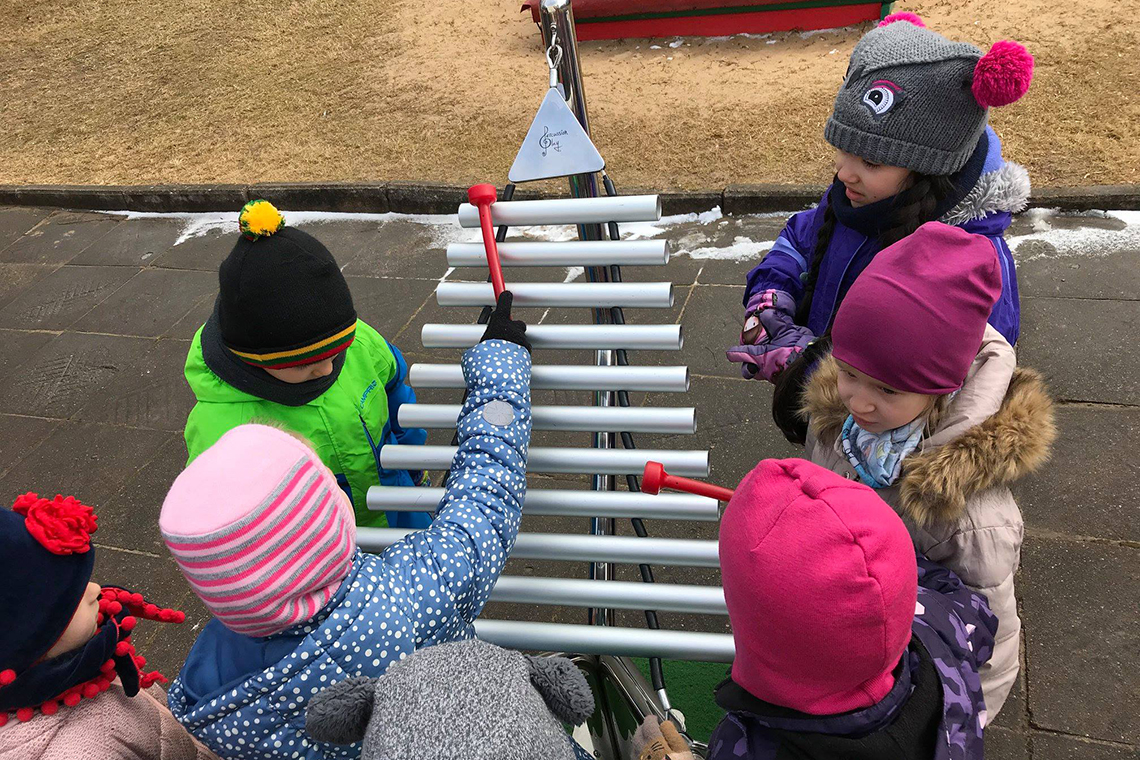
Further information on the positive effects of music and the great outdoors can be found here on our website. Take a look at our knowledge base, which hosts articles detailing the varied benefits of musical and outdoor play and White Papers on various music, play, and health-related topics.
